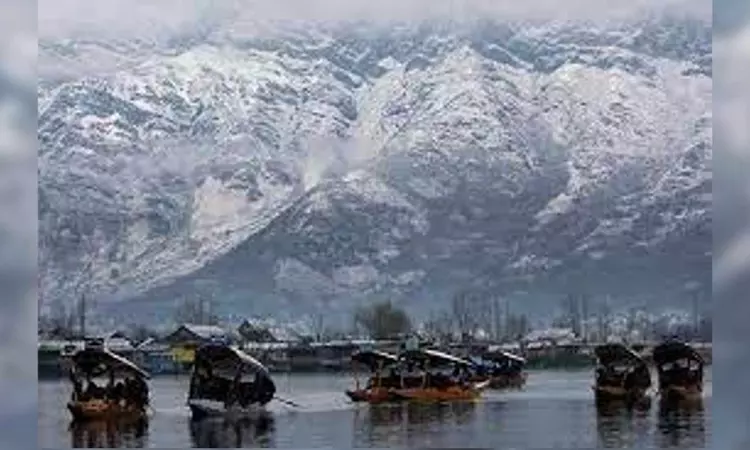Mercury stays above freezing point at most places in Kashmir
The chances of snowfall are the highest during this period and most areas, especially the higher reaches, receive heavy snowfall.

Representative Image
SRINAGAR: The famous ski resort of Gulmarg and some other areas in the higher reaches received fresh light snowfall but the minimum temperature improved by several degrees to provide relief from the intense cold conditions in Jammu and Kashmir, officials said on Saturday.
Gulmarg, in north Kashmir’s Baramulla district, and few other areas in the upper reaches received fresh snowfall on Saturday morning, the officials said. They said Shopian district in south Kashmir also experienced light snowfall owing to a very weak Western Disturbance.
The Meteorological Department had forecast a possibility of light rain/snow over isolated places in the higher reaches last night and Saturday early morning. It said the weather is likely to improve on Saturday, and would stay generally dry till December 27 when there is a possibility of light snow over isolated places in the higher reaches.
The MeT office said overall, there would be no significant weather activity till December end.
Meanwhile, owing to a cloud cover, the mercury witnessed a remarkable rise on Friday night and settled above the freezing point at most places. The summer capital of Srinagar recorded a low of 1.2 degrees Celsius on Friday night – an increase of about four degrees from the previous night’s minus 3.3 degrees Celsius, they said.
Pahalgam in south Kashmir's Anantnag district, which serves as one of the base camps for the annual Amarnath Yatra, recorded a minimum temperature of 0.2 degree Celsius, up over four degrees from the previous night’s minus 4.8 degrees Celsius, they said.
Gulmarg recorded a low of minus 1.5 degrees Celsius, the officials said. It was the coldest recorded place in the Kashmir valley. Qazigund recorded a low of 1.4 degrees Celsius, the Kokernag town saw the mercury settle at 1.2 degrees Celsius and Kupwara recorded the minimum of 1.3 degrees Celsius.
The improvement in the mercury has provided relief to the residents from the intense cold conditions which had resulted in the freezing of many slow-moving water bodies. The cold also caused the water supply lines in some areas to freeze, and forced people in the valley to put on extra layers of clothes to stay warm.
With electricity supply erratic in many areas of Kashmir, people are using Kangri, an earthen firepot, to beat the chill. The cold and dry weather has resulted in an increase in respiratory problems among children and elderly.
Kashmir is currently under the grip of 'Chilla-i-Kalan' -- the 40-day harshest winter period when a cold wave grips the region and the temperature drops considerably leading to the freezing of water bodies, including the Dal Lake as well as the water supply lines in several parts of the valley.
The chances of snowfall are the highest during this period and most areas, especially the higher reaches, receive heavy snowfall.
'Chilla-i-Kalan' will end on January 31. However, the cold conditions continue even after that in Kashmir with a 20-day-long 'Chilla-i-Khurd' (small cold) and a 10-day-long 'Chilla-i-Bachha' (baby cold).



